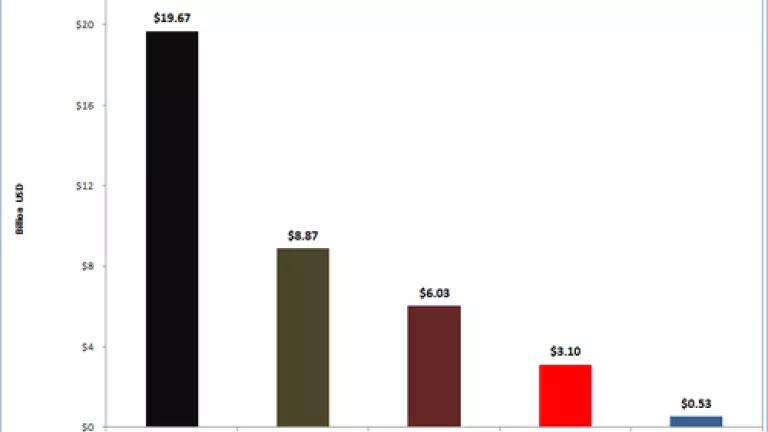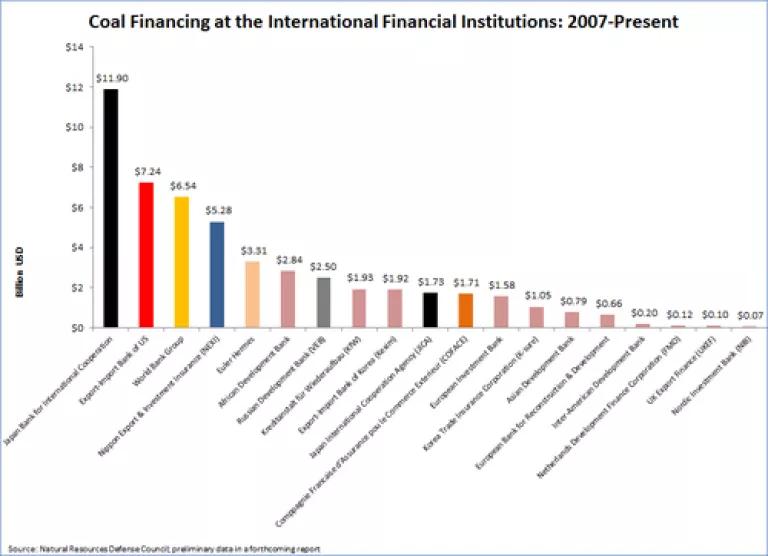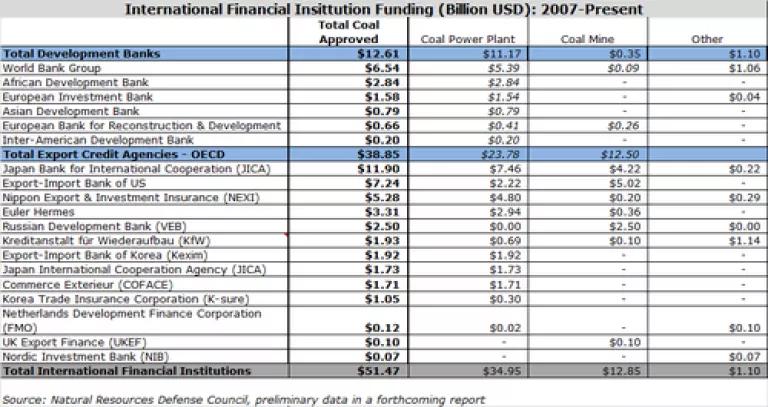Way Too Much Public Funding is Going into Coal Projects in Key Countries: Preliminary Findings Show

Since 2007, over $59 billion of public financing has supported coal projects through funding from development banks and international financial institutions in key countries. For these countries, the Japanese government is the mostly heavily invested, followed by the United States and Germany. This is an unsustainable use of public financing as these investments support coal projects that are driving climate change. The U.K. has just announced that they are going to join the U.S., Denmark, Finland, Iceland, Norway, and Sweden in ending public financing of overseas coal projects (as the Guardian and Bloomberg have reported). This is welcome news and should make the Germans, Japanese, and South Korean’s very uncomfortable as they are heavily invested in overseas coal projects. It is time for all countries to commit to, and enforce, strong provisions to end public financing of coal projects except in rare circumstances.
These findings are preliminary data from the Natural Resources Defense Council on the total coal funding from international financial institutions since 2007 through the present.* NRDC will be updating these numbers in the coming month and publishing an issue paper and detailed project-by-project database so these should be considered our first draft. Since some countries are extremely poor in their public reporting of these projects, this data should be considered a conservative estimate.**
The funding is split between the development banks—e.g., the World Bank Group, European Investment Bank, European Bank for Reconstruction and Development, and Asian Development Bank – and the export-credit agencies in key countries. Most countries have an export-credit agency that supports its companies in overseas exports. Unfortunately these institutions have been heavily invested in overseas coal projects over the years—coal power plants and coal mines.
Here are some of the key preliminary data.
Japan has been a major investor in overseas coal projects ($19.7 billion), followed by the U.S. ($8.9 billion), Germany ($6.0 billion), and South Korea ($3.1) – see figure.2 The U.S. has committed to end public financing of overseas coal projects, the Treasury Department (which overseas development bank financing for the U.S.) has finalized guidelines that signal it will vote no on coal projects under most conditions, and the U.S. Export-Import Bank has proposed draft guidelines that will mostly end the major source of U.S. historic funding.
The Japanese Bank for International Cooperation (JBIC) has been the worst, followed by U.S. Export Import Bank, the World Bank Group, Nippon Export & Investment Insurance of Japan, Euler Hermes of Germany, African Development Bank, Russian Development Bank, Kreditanstalt für Wiederaufbau (KfW) from Germany, Export-Import Bank of Korea, and many more (see figure).

Most of the funding has gone to coal-fired power plants, but countries are also are significantly funding coal mines. Overall, these financial institutions have invested 68% of the financing in coal-fired power plants and 37% in coal mines. Unfortunately the U.S. Treasury guidelines, the U.S. Ex-Im draft guidelines, and the U.K. commitment exclude coal mining. Since coal mines produce coal that then contributes to climate change, it is unacceptable to exclude this important source of carbon pollution. We hope that these organizations will correct this limitation.

Funding is ongoing, although it has slowed a bit. In 2013, we’ve documented over $8 billion in coal funding from these institutions. Japanese institutions have invested the most at $2.8 billion, followed by the institutions in the Russian Federation ($2.5 billion), Germany ($1.3 billion) and South Korea ($1.0 billion). This is a clear sign that these countries need to shift their investments now. Given the wide-scale availability of clean energy and the commitment these governments have to addressing climate change these countries are getting a black eye for their continued use of public financing for coal projects.
To ensure public financing isn’t directed at coal projects these provisions must: extended the restriction to all types of coal projects (e.g., coal power plants, coal mining, coal exports/imports, and other indirect support), encompass all types of financial support mechanisms (e.g., equity investments, guarantees, and investments in intermediaries), include increased transparency provisions, and ensure that project proponents are required to focus first and foremost on delivering clean energy.
----------------------
* This preliminary data includes the: (1) multilateral development banks – the World Bank Group, African Development Bank, Asian Development Bank, African Development Bank, Inter-American Development Bank, European Bank for Reconstruction and Development, and European Investment Bank; and (2) data for export-credit agencies from key countries in the Organization for Economic Cooperation and Development – specifically for ECAs from the U.S., Germany, Japan, U.K., The Netherlands, South Korea, France, Nordic Countries (e.g., the Nordic Investment Bank), and Russia. Additional countries are being developed and we have information to conclude that other countries have such investments but our data is incomplete at this stage. We have some data for the Chinese institutions, but this data is incomplete so we haven’t included this in the totals.
** We have allocated to each country the development bank financing based upon their shareholding percentage.

